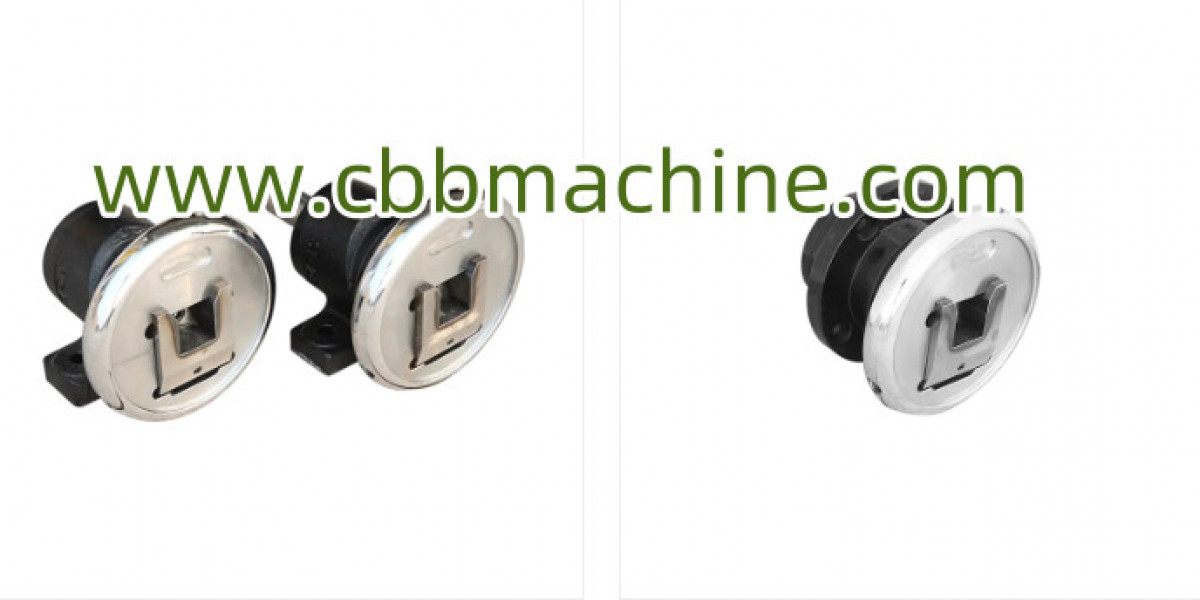The Importance of Magnetic Powder Brakes in Modern Manufacturing
In today's fast-paced manufacturing environment, industries are constantly looking for ways to enhance operational efficiency, reduce downtime, and improve product quality. One critical technology that has become indispensable across various sectors is the Magnetic Powder Brake. This advanced device offers a unique, reliable, and precise way to control torque and speed in industrial machines. Whether in packaging, printing, winding, or conveyor systems, Magnetic Powder Brakes are helping businesses achieve smoother, more efficient operations.
In this blog, we will explore how Magnetic Powder Brakes work, the benefits they offer, and how they can enhance the performance of different industrial machines.
What is a Magnetic Powder Brake ?
A Magnetic Powder Brake is an electromagnetic device that regulates the torque applied to rotating machinery. It operates on the principle of magnetic induction, where an electric current is passed through a coil to create a magnetic field. This field causes a special magnetic powder to form chains between the rotor and the stator, creating resistance to rotation.
Unlike traditional mechanical brakes that rely on friction between moving parts, Magnetic Powder Brakes offer a non-contact, smooth, and controlled braking system. The torque can be adjusted electronically, allowing for precise control over the machinery's speed and movement.
Key Benefits of Magnetic Powder Brakes
1. Precise Control of Speed and Torque
One of the standout features of the Magnetic Powder Brake is its ability to offer precise control over speed and torque. This is especially crucial in industries that require high levels of accuracy, such as printing, packaging, and winding. With the ability to adjust the braking force in real-time, operators can fine-tune the performance of machinery to ensure optimal results.
For example, in a packaging line, where conveyor belts and packaging machines need to work in perfect synchrony, Magnetic Powder Brakes can help maintain consistent tension in materials. This ensures the proper handling of delicate materials like films, foils, and paper, reducing the risk of damage and improving overall production quality.
2. Non-Contact Operation for Less Wear and Tear
Traditional braking systems generate friction, which leads to the wear and tear of components over time. In contrast, Magnetic Powder Brakes use a non-contact system, which significantly reduces wear and tear on the brake components. This results in longer operational lifespans for both the braking system and the overall machinery, reducing maintenance costs and minimizing the need for frequent replacements.
With less physical contact between parts, Magnetic Powder Brakes also lower the chances of mechanical failures that could disrupt production, ensuring more reliable and continuous operation.
3. Smooth, Gradual Braking for Enhanced Precision
Another significant advantage of Magnetic Powder Brakes is their ability to apply smooth, gradual braking. This is essential in systems that require delicate handling of materials, such as in the textile and paper industries. Abrupt stopping or sudden changes in speed can cause material misalignment or damage. With a Magnetic Powder Brake, the braking process is gradual, reducing the chances of these issues.
For example, in winding systems, where materials like paper, fabric, or plastic films are wound onto rolls, the brake ensures the material is neither stretched nor torn due to improper tension. The controlled braking makes winding systems more precise, increasing efficiency and quality.
4. Lower Maintenance Costs
The non-contact nature of Magnetic Powder Brakes leads to reduced wear and tear on the machinery, which, in turn, lowers maintenance costs. In traditional friction-based systems, components such as pads, drums, and discs need regular replacement due to the constant friction and wear. However, Magnetic Powder Brakes experience far less physical wear, resulting in fewer repairs and replacements.
With fewer maintenance needs, companies can save both time and money, allowing their machines to operate longer without the need for costly downtime or part replacements.
5. Improved Reliability and Performance
Reliability is essential in any industrial operation. A failure in machinery can lead to costly downtime, production delays, and quality control issues. Magnetic Powder Brakes provide enhanced reliability, as their non-contact design makes them less prone to failure compared to traditional friction-based systems. The consistent and smooth operation of these brakes ensures that machinery performs optimally with minimal risk of malfunction.
By using Magnetic Powder Brakes, companies can boost the overall reliability of their operations, ensuring high-quality production and fewer disruptions.
Applications of Magnetic Powder Brakes
Given their unique advantages, Magnetic Powder Brakes are widely used across a variety of industries. Some of the most common applications include:
1. Packaging Machinery
In packaging lines, maintaining the correct tension and speed is vital for smooth operation. Magnetic Powder Brakes are commonly used in packaging systems to control the movement of conveyor belts and other equipment. This allows manufacturers to handle materials such as films, labels, and boxes without the risk of misalignment or damage.
2. Winding and Unwinding Systems
In industries such as textiles, paper manufacturing, and film production, Magnetic Powder Brakes are used in winding and unwinding systems. The precise control of torque ensures that materials are wound onto spools with the correct tension, preventing breakage or stretching. This is particularly important in industries where the material is delicate or thin, and any mishandling can lead to defects.
3. Printing Presses
In the printing industry, ensuring that paper or other substrates remain at the right tension is critical for producing high-quality prints. Magnetic Powder Brakes help regulate the tension and speed of paper as it moves through the press, ensuring that it remains aligned and doesn’t misfeed.
4. Conveyor Systems
Conveyor systems are used in a wide range of industries, from food production to electronics assembly. Magnetic Powder Brakes are commonly integrated into these systems to control the speed and ensure a smooth flow of goods. The ability to adjust the braking force allows operators to fine-tune the system for optimal performance, reducing bottlenecks and increasing productivity.
5. Material Handling
In material handling systems, such as those used in construction or mining, Magnetic Powder Brakes help manage the movement and transfer of goods. Whether it's controlling the speed of a conveyor belt or ensuring the proper tension in lifting equipment, these brakes offer critical support for efficient and safe material handling.
Conclusion
Magnetic Powder Brakes are a versatile and reliable solution for modern manufacturing systems. Offering precise control over speed and torque, reduced wear and tear, and lower maintenance costs, these brakes are essential in ensuring smooth, efficient operations. Whether used in packaging, printing, winding, or conveyor systems, Magnetic Powder Brakes help industries maintain high production standards, reduce downtime, and improve overall reliability.
By integrating Magnetic Powder Brakes into your machinery, you can enhance performance and increase the efficiency of your production lines, all while lowering operational costs.








